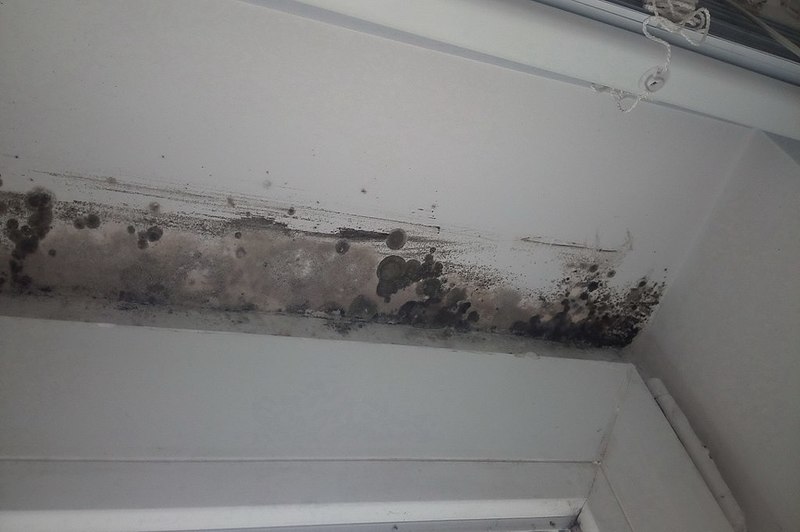The answer to the question on “what does Stachybotrys mold look like” is that its color is greenish-black. Stachybotrys is more commonly known as the black mold.
Mold is a disagreeable substance that tends to grow in your home during the changing seasons. Sometimes, they are visible and easily treated.

However, there are instances wherein they are hidden. Molds that are not easily seen can keep growing and spreading until it has wholly invaded your home.
Different Types Of Mold
The rapid spread of mold is the reason why it should be a cause of concern. This article aims to amend that by informing you about the different types of mold, what these molds look like, and where to find them.
Here are some of the most common household molds:
Stachybotrys
This is also referred to as the black mold, commonly known as a toxic mold type. Stachybotrys mold thrives in high humidity levels, and they are generally dark green or black.
Some strains of Stachybotrys are referred to as the “toxic mold” because they produce mycotoxins. Mycotoxin exposure leads to severe health problems, especially respiratory-related ones.
For children, the effects of Stachybotrys exposure involve neurological problems. Hence, it is vital to remove black mold in your household.
Trichoderma
Trichoderma has five subspecies. It is identified as a white mold with green patches.
This type of mold grows in colonies and is wool-like when seen in clusters. They love growing on damp fabrics and carpets.
You can also find them in HVAC system ducts and air conditioning filters. Like Stachybotrys, they have strains that produce mycotoxins.
When left alone, Trichoderma molds can ruin your building materials. They have enzymes that destroy textile, paper, and wood products, which leads to rot.
Ulocladium
If you have extreme water damage in your bathroom or kitchen, you may know of this type of mold. Ulocladium mold is usually black and grows in heavily water-damaged areas.
Ulocladium molds sometimes grow along with Stachybotrys and chaetomium molds. All of these types of molds are indicators of water damage.
They also have adverse health effects on humans. Exposure to ulocladium molds leads to allergies or skin infections.
Penicillin
Penicillin mold is allergenic and is identified by the color blue or green with a velvety texture. It is commonly found in places with water damage, like wallpapers, carpets, and mattresses.
Penicillin mold also spreads rapidly, even from one home to another. Here is an article about where penicillium grows so you can watch out for it.
Despite being useful in the medical field, exposure to penicillin mold can lead to asthma and pulmonary inflammation. Moreover, penicillin exposure is hazardous for people who have immune disorders.
Mucor
Mucor mold is another allergenic kind of mold. It is identified as white or, sometimes, greyish.
They are frequently found on HVAC systems or air conditioners. They love condensation, so you can also find them on damp carpets.
This type of mold affects the respiratory system as well. It tends to trigger asthma, so family members who have asthma are vulnerable to it.
Mucor can also cause flu-like symptoms. In more severe exposures, mucor mold can lead to mucormycosis. Due to the health effects of mucor, it is necessary to have them removed from your household as soon as possible.
Identifying Mold
The best way to identify the type of mold is by color. As mentioned above, these different types of mold come in different colors and textures.
Here is an article outlining the identification of mold by color to guide you.
What To Do When There Is Mold
The list of common household molds should already alarm you about their adverse health effects. Hence, the responsible thing to do is to remove mold.
If the mold contamination is not extensive, here is what you have to do:
Step #1. First, identify which areas are contaminated by molds. They rapidly spread, so they are unlikely to just stay in one surface or room.
Check your crawl spaces, basement, and water damage-prone rooms because they are vulnerable to mold. Inspect your flooring, carpets, and drywall as well.
Step #2. You must separate mold-contaminated items from clean ones. Items beyond repair should be appropriately disposed of using a tight knot to trap the spores inside.
Moreover, when dealing with moldy objects, you have to wear protective gear — don goggles, masks, and a pair of gloves before handling mold-contaminated items.
However, if the mold contamination is extensive, then contact a professional remediation team. Here is what they will do:
- First, they will dry out the affected area. They will likely use air scrubbers and commercial dehumidifiers.
- Then, they will prepare the room and contain the mold. Since mold spores are airborne, professionals seal the area before working on removing the fungi.
- After that, they will work on the mold remediation process. They will disinfect the mold-contaminated items and make necessary repairs.
Conclusion
We hope this article that describes “what does Stachybotrys mold look like”, plus other types of household molds, was helpful for you. We hope this article regarding molds guides you in identifying and detecting fungi before they affect your house and health.
